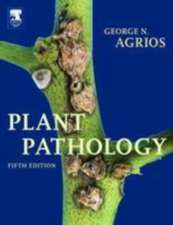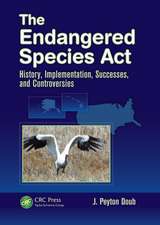Soil Microbiology and Sustainable Crop Production
Editat de Geoffrey R. Dixon, Emma L. Tilstonen Limba Engleză Paperback – 6 noi 2014
| Toate formatele și edițiile | Preț | Express |
|---|---|---|
| Paperback (1) | 1550.79 lei 6-8 săpt. | |
| SPRINGER NETHERLANDS – 6 noi 2014 | 1550.79 lei 6-8 săpt. | |
| Hardback (1) | 1555.83 lei 6-8 săpt. | |
| SPRINGER NETHERLANDS – 9 sep 2010 | 1555.83 lei 6-8 săpt. |
Preț: 1550.79 lei
Preț vechi: 1891.21 lei
-18% Nou
Puncte Express: 2326
Preț estimativ în valută:
296.78€ • 308.70$ • 245.01£
296.78€ • 308.70$ • 245.01£
Carte tipărită la comandă
Livrare economică 14-28 aprilie
Preluare comenzi: 021 569.72.76
Specificații
ISBN-13: 9789400794238
ISBN-10: 9400794231
Pagini: 436
Ilustrații: XIV, 436 p.
Dimensiuni: 155 x 235 x 23 mm
Greutate: 0.63 kg
Ediția:2010
Editura: SPRINGER NETHERLANDS
Colecția Springer
Locul publicării:Dordrecht, Netherlands
ISBN-10: 9400794231
Pagini: 436
Ilustrații: XIV, 436 p.
Dimensiuni: 155 x 235 x 23 mm
Greutate: 0.63 kg
Ediția:2010
Editura: SPRINGER NETHERLANDS
Colecția Springer
Locul publicării:Dordrecht, Netherlands
Public țintă
GraduateCuprins
Author addresses.- Preface 1: The Nature of Sustainable Agriculture; Andrew D. Noble and Sawaeng Ruaysoongnern.- 2: The microbiology of natural soils; Teri C. Balser, Devin Wixon, Lindsey K. Moritz and Laura Lipps.- 3: Soil microbiology and nutrient cycling; D.W. Hopkins and J.A.J. Dungait.- 4: The Role of Microbial Communities in the Formation and Decomposition of Soil Organic Matter; Leo Condron, Christine Stark, Maureen O’Callaghan, Peter Clinton and Zhiqun Huang.- 5: Intimate Associations of Beneficial Soil Microbes with Host Plants; Oksana Y. Shtark, Alexey Y. Borisov, Vladimir A. Zhukov, Nikolay A. Provorov and Igor A. Tikhonovich.- 6: Soilborne Pathogens and their Interactions with the Soil Environment; Geoffrey R Dixon and Emma L. Tilston.- 7: The impact of land - use practices on soil microbes; Emma L. Tilston, Tom P. Sizmur, Wilfred Otten and Jim A. Harris.- 8: The effects of plant breeding on soil microbes; Petra Marschner and Zed Rengel.- 9: Utilizing Soil Microbes for Biocontrol; Alison Stewart, Michael Brownbridge, Robert A. Hill and Trevor A. Jackson.- 10: How will climate change impact soil microbial communities? T.C. Balser, J.L.M. Gutknecht and C. Liang.- 11: Evaluating the economic and social impact of soil microbes; Harpinder S. Sandhu, Vadakattu V.S.R. Gupta and Stephen D. Wratten.
Notă biografică
Textul de pe ultima copertă
Soils into which crop plants root and from which they obtain essential minerals and water contain huge arrays of microbes. Many have highly beneficial effects on crop growth and productivity, others are pathogens causing diseases and losses to yield and quality, a few microbes offer protection from these pathogenic forms and others have little or no effect. These intimate and often complex inter-relationships are being explored with increasing success providing exciting opportunities for increasing crop yields and quality in sustainable harmony with the populations of beneficial soil microbes and to the detriment of pathogens. This book explores current knowledge for each of these aspects of soil microbiology and indicates where future progress is most likely to aid in increasing crop productivity by means which are environmentally benign and beneficial.Advanced first degree, post-graduate students, post-doctoral researchers, lecturers, research-leaders, consultants, advisors, crop practitioners and policy makers involved with crop agronomy, biological control, plant pathology, plant breeding, agriculture, soil science, environmental interactions and conservation, and others requiring up to date knowledge of the impact of soil microbiology on sustainable crop production will find this book invaluable.
Caracteristici
Topics brought together in one book Science, economics and practice are considered in a coherent form Provides a format by which soil microbes may be used for the alleviation of malnutrition and hunger Includes supplementary material: sn.pub/extras






